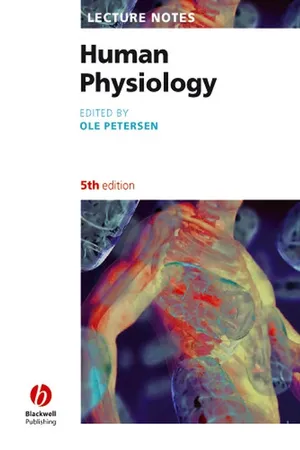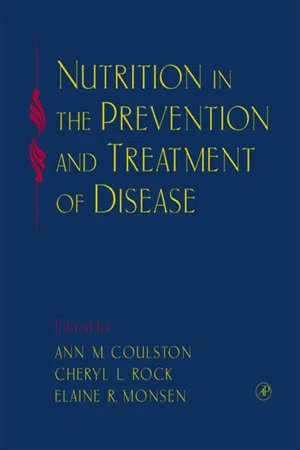Biological Sciences
Metabolic Rate
Metabolic rate refers to the rate at which an organism expends energy through various metabolic processes, such as respiration, digestion, and circulation. It is a measure of the overall energy expenditure of an organism and is influenced by factors such as age, sex, body size, and activity level. Metabolic rate is often used as an indicator of an organism's physiological state and health.
Written by Perlego with AI-assistance
Related key terms
Related key terms
1 of 4
Related key terms
1 of 3
5 Key excerpts on "Metabolic Rate"
- eBook - ePub
- Suzanne Currie, David H. Evans, Suzanne Currie, David H. Evans(Authors)
- 2020(Publication Date)
- CRC Press(Publisher)
10 Metabolism Tommy Norin and Ben Speers-Roesch CONTENTS 10.1 Introduction 10.2 Levels of Metabolic Rate 10.3 Modulators of Metabolic Rate 10.3.1 Body Mass 10.3.2 Temperature 10.3.3 Hypoxia 10.4 Variation in Metabolic Rate among and within Species 10.5 Ecological and Evolutionary Relevance of (Varation in) Metabolic Rate 10.6 Conclusion References10.1 Introduction
All living things, including fishes, must harness energy and materials from their environment in order to maintain homeostasis, grow, and reproduce. Metabolism is the sum of the chemical reactions within the body that convert food to energy molecules (e.g. ATP) and building blocks for growth, and which use these compounds to sustain the cellular energy demands that support life (e.g. protein synthesis, molecular movement, and generation of membrane electrochemical gradients). To thrive, organisms must modulate their rates of energy supply to match varying energy demands, or vice versa (Somero et al. 2017). This energy turnover is Metabolic Rate, which is most easily thought of as the amount of energy used by an animal per unit of time (i.e. energy expenditure). While different cells, tissues, and organs have their own Metabolic Rates, we will focus on whole-animal Metabolic Rate, which reflects the integrated, overall energy expenditure of an ecologically relevant unit, the individual. Metabolic Rate determines an animal’s demands for environmental resources and its capacities for biological activities (Brown et al. 2012). Consequently, Metabolic Rate fundamentally influences the ecology and evolution of animals and their responses to environmental change, which can affect energy supply or impose energy demands.Metabolic Rate is sustained by aerobic or anaerobic energy supply (Ballantyne 2014). Aerobic metabolism occurs in the mitochondria, where ATP is generated from ADP using food energy (lipids, carbohydrates, and proteins) and oxygen delivered by the cardiorespiratory system. Anaerobic metabolism produces ATP without oxygen by directly transforming ADP into ATP using high-energy compounds (e.g. creatine phosphate) or anaerobic glycolysis (conversion of carbohydrates to lactate) in the cytoplasm. Although anaerobic metabolism produces ATP more rapidly than aerobic metabolism, it does so far less efficiently (i.e. less ATP per unit of fuel) and is accompanied by metabolic acid and/or other deleterious by-products (Somero et al. 2017). Thus, animals rely on anaerobic metabolism only under special circumstances, typically of shorter duration, such as intense exercise or daily hypoxic events. - eBook - ePub
- Lynn B. Martin, Cameron K. Ghalambor, H. Arthur Woods(Authors)
- 2014(Publication Date)
- Wiley-Blackwell(Publisher)
Chapter 14 Adding Fuel to the “Fire of Life”: Energy Budgets across Levels of Variation in Ectotherms and EndothermsVincent Careau1 , Shaun S. Killen2 , and Neil B. Metcalfe21 Centre for Integrative Ecology, School of Life and Environmental Sciences, Deakin University, Victoria, Australia2 Institute of Biodiversity, Animal Health and Comparative Medicine, College of Medical, Veterinary and Life Sciences, University of Glasgow, Glasgow, UKIntroduction
Energetics, within the realm of biology, is defined as the study of the causes, mechanisms, and consequences of the acquisition, storage, and use of energy by biological organisms. Energy metabolism—the “fire of life”—is the sum of the processes by which animals acquire energy, channel energy into useful functions, and dissipate energy from their bodies. Animals need energy to accomplish three main types of physiological work: biosynthesis (e.g., growth, lactation, gamete production), maintenance (e.g., circulation, respiration, tissue repair or turnover, nervous coordination), and generation of external work (e.g., locomotion). Kinetic energy (heat) is an inevitable by-product of this metabolism; the heat produced by an animal over an entire day, its daily energy expenditure (DEE; see Box 14.1 for definitions of bold terms), is a fundamental measure in biology because it provides quantitative information on how much food it needs, the total activity of all its physiological and behavioral mechanisms, and the energy it drains from its ecosystem (Speakman 2000).Research initially concentrated on measurement of the Metabolic Rate (MR) of animals under standardized conditions to obtain a comparable measure of the minimal metabolic level required to maintain physiological homeostasis, such as basal Metabolic Rate (BMR), resting Metabolic Rate (RMR), standard Metabolic Rate (SMR), and routine MR. Physiologists have also quantified the MR of animals under challenging situations to estimate maximal Metabolic Rate (MMR). A major advent was the invention of the doubly-labelled water technique to measure DEE in free-living subjects (Lifson et al - eBook - ePub
Lecture Notes
Human Physiology
- Ole H. Petersen, Ole H. Petersen(Authors)
- 2019(Publication Date)
- Wiley-Blackwell(Publisher)
Chapter 22 Energy Metabolism22.1 Energy, thermodynamics and animals
The term ‘energy’ comes from the Greek words en (meaning in, within) and ergon (meaning work) and is thus an apt description of the effort required to stay alive and to grow. The word ‘metabolism’ is also derived from Greek (metabole, meaning change) and describes the chemical reactions (i.e. changes) that take place within a living organism to maintain life. Energy metabolism is a property of every living cell and to say an organism is ‘alive’ is to say it has an energy metabolism. To measure the rate of this energy metabolism (Metabolic Rate) is to measure the ‘cost of living’.Animals are descended from bacteria that obtained their energy and carbon skeletons by feeding on other organisms. Humans are classified as obligate aerobic heterotrophs, which means that during metabolism, the carbon and hydrogen atoms in food molecules are combined with oxygen atoms to produce CO2 and H2 O. The chemical energy contained in the food molecules is released during metabolism and used to do work, with most of it eventually being converted to heat.Early investigations into energy metabolism showed that animals obey the laws of thermodynamics and the amount of energy released during metabolism is the same as that released by the combustion or ‘burning’ of the same foodstuffs. Although food is a complex mixture of molecules, for the purposes of this chapter, the most important components of food are carbohydrates, fats (or lipids) and proteins. Digestion is covered in Chapter 19 . Energy metabolism has been called the ‘fire of life’ and can be described by the following equation:Metabolism is divided into catabolism and anabolism (Table 22.1 and Fig. 22.1 ) Catabolism comprises the pathways where complex nutrient macromolecules are broken down to simple, smaller molecules with the release of chemical free energy. Anabolism comprises the metabolic pathways involved in the synthesis of complex molecules from simpler ones and requires the input of energy. Catabolic pathways deliver chemical energy in the form of adenosine triphosphate (ATP), nicotinamide adenine dinucleotide (reduced) (NADH), nicotinamide adenine dinucleotide phosphate (reduced) (NADPH), and flavin adenine dinucleotide (reduced) (FADH2 ), and these energy carriers are used to run anabolic pathways. In the process of releasing their energy during anabolism, these carriers are converted to adenosine diphosphate (ADP), NAD+ , NADP+ - Carol J. Boushey, Ann M. Coulston, Cheryl L. Rock, Elaine Monsen(Authors)
- 2001(Publication Date)
- Academic Press(Publisher)
16 ].The Metabolic Rate of adult females fluctuates with the menstrual cycle. An average of 359 kcal/day difference in the BMR has been measured between its low point, about 1 week before ovulation at day 14, and its high point, just before the onset of menstruation. The mean increase in energy expenditure is about 150 kcal/day during the second half of the menstrual cycle [17 ]. During pregnancy, RMR decreases in the early stages, whereas later in pregnancy, the Metabolic Rate is increased by the processes of uterine, placental, and fetal growth and by the mother’s increased cardiac work [18 ].g. Environmental Influences.
REE is affected by extremes in environmental temperature. People living in tropical climates usually have RMRs that are 5–20% higher than those living in a temperate area. Exercise in temperatures greater than 86°F also imposes a small additional metabolic load of about 5% owing to increased sweat gland activity. The extent to which energy metabolism increases in extremely cold environments depends on the insulation available from body fat and protective clothing.2. MEASURING RESTING ENERGY EXPENDITURE: INDIRECT CALORIMETRY
The technique of indirect calorimetry has become the method of choice in most circumstances when a measurement of REE is needed. The term indirect refers to the fact that energy (heat) production is determined by measuring O2 consumption and CO2 production rather than directly measuring heat transfer. The equipment varies but a ventilated hood system is most commonly used. A clear plastic hood is placed over the subject’s head and made airtight around the neck (Fig. 3 ; see color plate at the back of the book). Indirect calorimetry has the advantage of mobility and low equipment cost and is frequently used in clinical settings to assess patients’ energy requirements. Indirect calorimetry also provides quantitative information about the types of substrates that are oxidized [19 ]. The pretesting environment impacts the measurement of RMR. Outpatient-test experimental conditions have been shown to overestimate RMR by approximately 8% compared with inpatient measurements of RMR [20- eBook - ePub
Size
How It Explains the World
- Vaclav Smil(Author)
- 2023(Publication Date)
- William Morrow(Publisher)
19 But it found that mean Metabolic Rates of major taxonomic groups fit within the range of 0.3–9 watts per kilogram, with a small laboratory mouse near the top of this range and a 4-ton elephant close to the bottom. True, this is a 30-fold difference, but given the enormous diversity of living forms on Earth, whose masses range over 20 orders of magnitude, this is a remarkably narrow range.As for insects, the most species-rich group of organisms that do not regulate their body temperature, a study of some 400 species concluded that their Metabolic Rates scale with exponents ranging between 0.7 and 1.0, but another analysis found them to conform to the 0.75 rule.20 A study of leaf-cutting ants, those busy tropical harvesters who cut and transport leaves to underground chambers in order to grow their fungal gardens, added another interesting insight to the metabolic scaling of social insects.21 Individual burden (the intensity of foraging) declines only marginally when more workers are added to the workforce, but the trail length limits the foraging rate and hence the amount of resources needed for the colony’s growth and reproduction: a trail that is 50 percent longer cuts the foraging rate by half, posing an insurmountable metabolic limit on the colony’s size.As might be expected, size-dependent human Metabolic Rates also behave in a less than perfectly orderly manner. BMR depends on gender, body size, body composition, and age, and hence it does not account for a fixed share of the BMR but for a range of about 45–70 percent of total daily energy need. Extremes of actual daily energy expenditure based on the latest international recommendations range from less than 2,000 to more than 4,000 kilocalories a day. Total energy expenditure (TEE) is the product of BMR and of the appropriate (and approximate) physical activity level (PAL): TEE = BMR × PAL (obviously, PAL = TEE / BMR).22 For a 70-year-old woman weighing 55 kilograms whose largely sedentary life is interrupted by short spells of light domestic activity, the calculation is as follows: a BMR (0.038M + 2.755) of 4.85 multiplied by 1.53 equals 7.41 megajoules or 1,770 kcal/day. For a 25-year-old 80-kilogram male lumberjack the total will be BMR (0.063M
Index pages curate the most relevant extracts from our library of academic textbooks. They’ve been created using an in-house natural language model (NLM), each adding context and meaning to key research topics.
Explore more topic indexes
Explore more topic indexes
1 of 6
Explore more topic indexes
1 of 4




